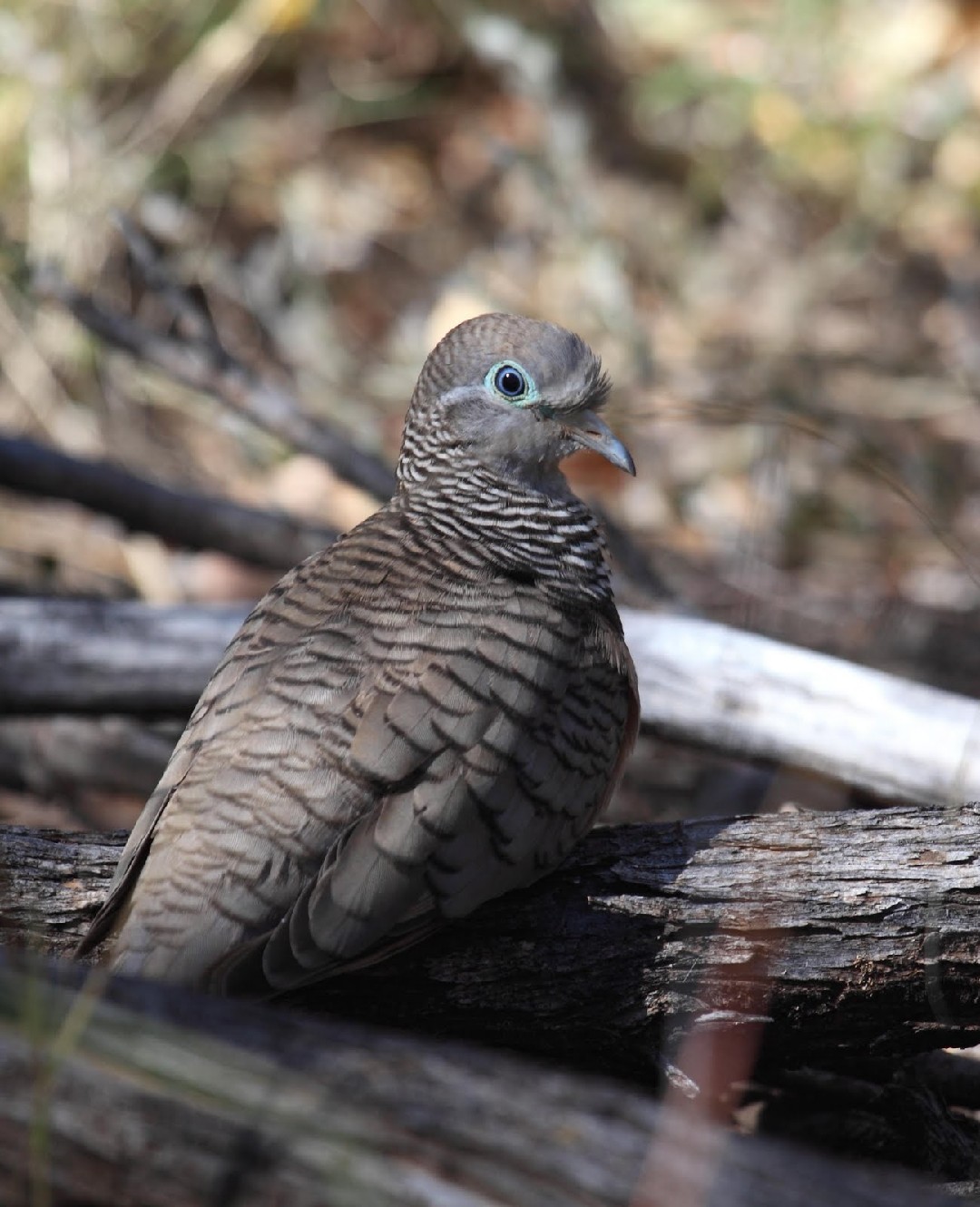Peaceful Dove
A species of Australasian Ground Doves Scientific name : Geopelia placida Genus : Australasian Ground Doves
Peaceful Dove, A species of Australasian Ground Doves
Botanical name: Geopelia placida
Genus: Australasian Ground Doves
Content
Description People often ask General Info
 Photo By http://www.comebirdwatching.blogspot.com/ , used under CC-BY-SA-3.0 /Cropped and compressed from original
Photo By http://www.comebirdwatching.blogspot.com/ , used under CC-BY-SA-3.0 /Cropped and compressed from original Description
The bird is a relatively small pigeon and varies in length from 19 to 21 centimetres (7.6 to 8.4 inches). The peaceful dove has a pink-grey breast with chequered grey-brown wings. Thin striations of black appear around the neck and nape area and descend down the back. The eye is greyish-white and a blue-grey ring surrounds the eye that tapers off and joins the beak/cere. The juveniles are paler and less striated. They also have a duller eye ring. The nape is similar to that of the bar-shouldered dove in that the nape feathers are striated but differs in that the bar-shouldered dove does not have striated throat feathers like the peaceful dove. Furthermore, the nape feathers are grey-brown in colour compared to the vivid copper colour seen with bar-shouldered doves. Calls of the peaceful dove are high-pitched "doodle-doo", "co-co-coo" and "croorrr!". 
Size
24 cm
Colors
Black
Bronze
Gray
White
Blue
Life Expectancy
14 years
Nest Placement
Tree
Feeding Habits
Peaceful Dove, a primarily granivorous species, forages on the ground for seeds. It occasionally eats invertebrates, displaying a blend of hunting and foraging behaviors, with unique preferences for certain seeds.
Habitat
Peaceful Dove thrives in open habitats with a mix of grassy understories, bushes, and trees, notably among Eucalyptus, Acacia, or Casuarina. Preferred landscapes include sclerophyll forests, woodlands, and tall scrubland. They are also found in human-modified settings with native flora, such as agricultural lands, urban gardens, and railyards, but they avoid dense forests.
Dite type
Granivorous
People often ask
General Info
Feeding Habits
Bird food type
Behavior
The peaceful dove is found in pairs, groups and flocks. They feed off the ground and are found commonly in streets and gardens. They also are found in scrublands, woodlands, watercourses, railyards and on the edge of rainforests. When not found on the ground feeding, they can be found in trees roosting. The doves fly in a rapid, undulating motion. The wings make a flushing "frrr" noise when the birds are in flight. 
Distribution Area
They can be found all over Australia except Tasmania, southern Victoria and south western Australia . Unfortunately, the doves' range is reducing due to competition with the introduced spotted turtle dove. In New Guinea they are mainly found in the south of the island but also occur at a few sites in the north and on the Aru Islands. 
Species Status
Not globally threatened.

 Photo By http://www.comebirdwatching.blogspot.com/ , used under CC-BY-SA-3.0 /Cropped and compressed from original
Photo By http://www.comebirdwatching.blogspot.com/ , used under CC-BY-SA-3.0 /Cropped and compressed from original